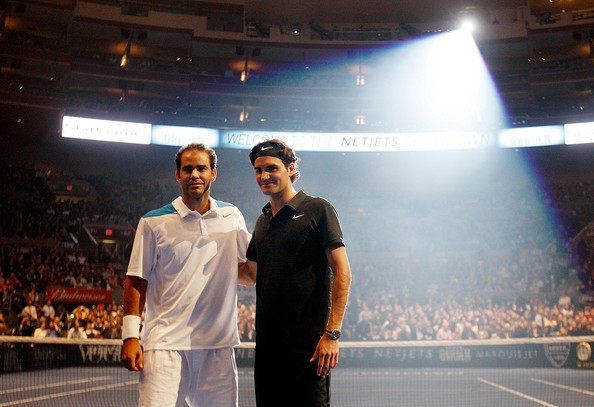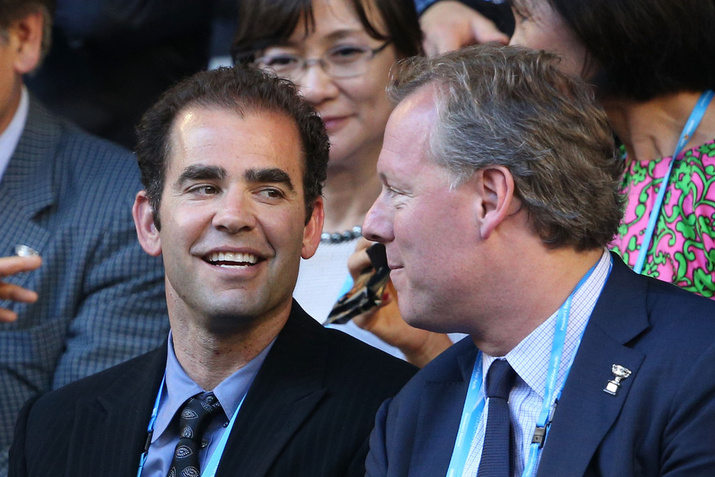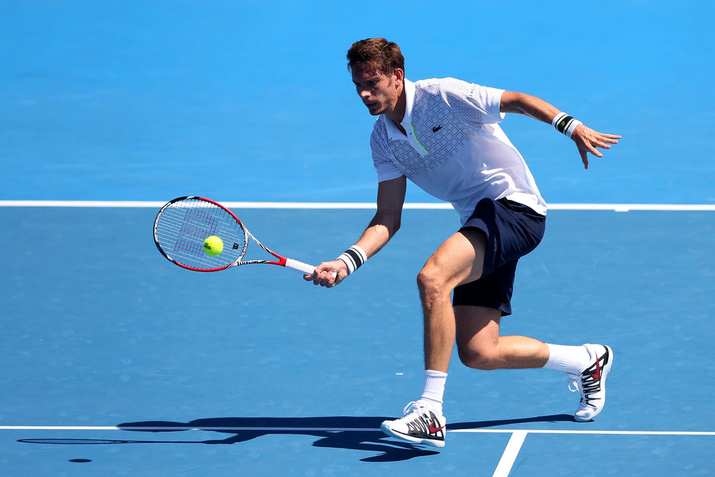Don't miss any stories → Follow Tennis View
FollowWhy Tennis May Not Have Left Serve-Volley Behind
In the past decade, professional tennis has evolved from battles between contrasting game styles to battles almost solely constructed on baseline execution. In the past, serve-volleyers from Boris Becker in the 1980s to Pete Sampras in the 1990s proliferated. But the idea of centering a game around a serve-volley strategy became antiquated and ineffectual somewhere between the Sampras era and what would become the era of Roger Federer.

There are a number of reasons why the serve-volley style has diminished and why it is unlikely to make a huge comeback. These are a combination of technology, varying speeds of playing surfaces and the typical player’s physical attributes.
One of the most notable changes between tennis in the 1970s-1990s and the current game is the technology used by the players. The material of the racquets currently used is mostly a composition of graphite and/or carbon fiber. These racquets are lighter and much more dynamic than the wooden instruments of previous eras, so they allow for much more power at contact with the ball. There is also a huge difference in the strings used by current players, since tennis companies have spent millions on researching and developing racquets and strings that respond better with the tennis ball. All this technology assists players in achieving maximum purchase and power on the ball when returning serve. Thus, the server has less opportunity to reach the net on favorable terms, making it much harder to win or even enter points.
The surface speeds used around the world is also hugely influential on the lack of serve-volleying players. Much was made of the faster courts at this year’s Australian Open, which threw a number of players off their rhythm. While fast surfaces can be conducive to serve-volleying tennis, such as the grass at Wimbledon, a higher-bouncing fast surface isn’t ideal because it is the low bounce at Wimbledon that makes the game style effective. How the tennis calendar is assembled also detracts from a serve-volleying game. The tournaments that would favor it are very few, for the grass lead-up to Wimbledon and the indoor season are both short.
Arguably, serve-volley is also a more physically intensive style compared with that of a baseliner. With players arguably peaking at an older age in the present day, it is not a style conducive to long careers. Players not only peaked at younger ages in the 1980s and 1990s, but they were also built somewhat differently from players currently on the tour. Players who built their careers around the serve-volley game often had a lower center of gravity than the baseliners of today, an attribute favorable to their forecourt play.
All of these reasons have contributed to the tennis-coaching fraternity turning away from coaching this kind of style. This has ultimately led to a generation of players who lack the ability to serve and volley. Since the retirement of one of the greatest serve-volleyers in Pete Sampras, players have instead opted for a game style heavily centered on baseline play and outlasting an opponent in longer rallies.

On Sampras’ recent visit to Melbourne for the Australian Open final, he was quizzed about the evolution of the game at the elite level.
“The game certainly has changed in the last 10 years,” Sampras lamented. “The serve-and-volley tennis is a lost art. No one is really doing it. Everyone is staying back and hitting the [stuffing] out of the ball, which is fun to watch.”
“Wimbledon these days is one-dimensional,” Sampras continued, not afraid to mince words. “It's just the nature of technology, and maybe the nature of how everyone is growing up with technology.”
Sampras’ observations spurred more questions than answers about the current crop of elite tennis players as well as the future direction of the game. He claimed that, were he hypothetically still active in the ATP, he would still be serve-volleying.
“People say it's harder to do it [because of] the technology. But I think technology would have helped me out,” a smiling Sampras said. “If I used these racquets that Rafa is using, it's easier to serve, and easier to volley. I could serve harder and longer. It would have been easier.”
Couple these remarks by Sampras with the coaching appointments of Ivan Lendl, Boris Becker and Stefan Edberg by some of the most famous ATP stars, and one wonders whether the serve-volleying game style is really dead and buried. These developments may have made hearts flutter among serve-volley tennis fans, but it is also easy to attribute the appointments to the players’ pursuit of the perfect all-court game.

There can be an argument made that small doses of serve-volley tennis are still effective, especially when advocates of the tactic like Roger Federer use it to such effect as he did in his fourth-round victory over Jo-Wilfried Tsonga at the Australian Open. Players like Nicolas Mahut and Julien Benneteau have also enjoyed success on the circuit by blending a serve-volleying game with a solid baseline game. The game has also often proved effective against players inside the top 10, who can struggle to deal with the fast-paced aggression. However, as tennis evolves, it seems as if time is working against a style made famous on lower-bouncing surfaces when tennis was still in a fairly embryonic stage.
The apparent demise of serve-volley tennis poses an intriguing question for the future of the sport. Once upon a time, different geographical areas produced vastly different styles. This resulted in highly entertaining and compelling tennis with each type of style eventually having its time in the sun. This is not to say that the kind of baseline tennis we see today is not entertaining. Certainly, it is. But one wonders whether a sport that still grasps all four corners of the planet will merely become, as Sampras described it, “one-dimensional.” Will serve-volley become just another legend of tennis history?










